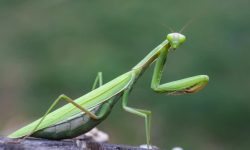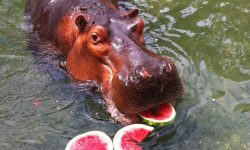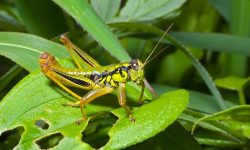Jellyfish are among the ocean’s most mesmerizing creatures — silent, graceful, and mysterious. Drifting through the seas like floating umbrellas, they have existed for over 500 million years, making them one of Earth’s oldest living animals. But have you ever wondered: what do jellyfish eat?
Despite their delicate appearance, jellyfish are carnivorous predators. They feed on a variety of tiny sea creatures, using their tentacles equipped with stinging cells called nematocysts to paralyze their prey. From microscopic plankton to small fish, jellyfish are surprisingly effective hunters in the marine food chain.
In this detailed guide, we’ll explore 20 foods jellyfish love the most, how they capture their meals, and how their feeding habits shape the ocean ecosystem.
Understanding the Jellyfish Diet

Jellyfish Are Carnivorous
Most jellyfish are strict carnivores. They don’t eat plants or algae like some sea animals do — instead, they rely on small, living organisms for nutrition. Their diet consists of zooplankton, crustaceans, larvae, and even other jellyfish.
Jellyfish absorb nutrients directly through their thin, gelatinous bodies. Because they lack a brain, heart, or bones, their entire feeding process is controlled by simple nerve responses.
How Jellyfish Eat
Jellyfish have a fascinating feeding mechanism. They use long, flowing tentacles lined with stinging cells to capture prey. When a small organism touches these tentacles, the stingers inject venom that paralyzes it.
The tentacles then bring the prey into the jellyfish’s mouth opening, located underneath its bell. The food is digested inside the gastrovascular cavity, where nutrients are absorbed and waste is expelled through the same opening.
This simple yet effective method allows jellyfish to survive in almost any oceanic environment — from shallow coastal waters to deep sea trenches.
How Often Do Jellyfish Eat?
Jellyfish eat whenever food is available. Since they drift with ocean currents, their feeding depends on what passes by. Smaller species may eat several times a day, while larger ones can survive for days without food.
Their slow metabolism allows them to endure long periods of food scarcity — one reason they thrive in changing ocean environments.
20 Foods Jellyfish Love the Most
1. Plankton
Plankton is the primary food source for most jellyfish. Specifically, they consume zooplankton — tiny animal-like organisms that float near the ocean’s surface.
Zooplankton includes microscopic crustaceans, larvae, and small fish eggs. These provide essential proteins and fats for jellyfish growth.
Since plankton is abundant, jellyfish rarely run out of food, making it a perfect energy source for their drifting lifestyle.
2. Fish Eggs
Fish eggs, also called roe, are an easy and nutritious meal for jellyfish. They’re small, soft, and packed with nutrients.
Jellyfish use their tentacles to trap drifting egg clusters, swallowing them whole.
Fish eggs provide protein and fat that help jellyfish grow and reproduce, especially during spawning seasons when eggs are plentiful.
3. Small Fish
Many medium and large jellyfish species, such as the lion’s mane jellyfish, eat small fish that wander too close to their tentacles.
The venom from their stingers quickly immobilizes the prey, allowing jellyfish to pull it into their central mouth for digestion.
This hunting ability makes jellyfish effective predators, even without eyes or intelligence.
4. Fish Larvae
Fish larvae — baby fish just hatched from eggs — are a common part of a jellyfish’s diet.
Their small size and soft bodies make them easy to capture and digest. Since jellyfish often share habitats with spawning fish, fish larvae are a constant food source.
This predation can sometimes affect local fish populations, especially when jellyfish blooms occur in large numbers.
5. Crustacean Larvae
Crustaceans like crabs, shrimp, and lobsters release larvae into the water during reproduction. These larvae float freely, becoming easy prey for jellyfish.
Crustacean larvae are high in protein and nutrients, helping jellyfish maintain muscle-like tissue for propulsion.
This diet link between jellyfish and crustaceans shows how they play a major role in controlling planktonic populations.
6. Copepods
Copepods are tiny crustaceans that form a large part of the zooplankton community. They’re one of the jellyfish’s favorite foods.
Their constant swimming makes them perfect targets for drifting jellyfish tentacles. Once caught, copepods are quickly stung and digested.
Copepods are nutrient-rich and essential for jellyfish survival, particularly in nutrient-poor open waters.
7. Shrimp
Larger jellyfish species sometimes consume small or juvenile shrimp.
Shrimp provide dense nutrition, especially protein and minerals that support growth and energy.
Shrimp predation also helps maintain the balance of small crustacean populations in coastal ecosystems.
8. Crabs (Juveniles)
Juvenile or larval crabs often fall victim to jellyfish. These tiny crabs drift along with ocean currents and are easily ensnared by jellyfish tentacles.
Crabs supply vital nutrients like calcium and protein, which help jellyfish grow and repair damaged tissues.
This predator-prey relationship highlights how jellyfish indirectly regulate crustacean populations.
9. Larvae of Marine Worms
The ocean is filled with tiny worm-like larvae that jellyfish readily consume. These soft-bodied creatures provide high-quality protein and are easily digested.
Marine worm larvae are particularly common in plankton-rich coastal waters, where jellyfish often bloom.
This diet component supports fast jellyfish growth during warm seasons.
10. Mollusk Larvae
Young mollusks such as clams, snails, and oysters release larvae that float freely in the ocean before settling on the seafloor.
Jellyfish capture these larvae effortlessly using their sticky tentacles. The larvae’s small size makes them a convenient meal, especially for smaller jellyfish species.
This feeding behavior can even impact shellfish populations in heavily infested regions.
11. Rotifers
Rotifers are microscopic aquatic organisms that many jellyfish eat. These tiny creatures are part of the zooplankton community and are rich in proteins and fats.
Because rotifers are so small, jellyfish must consume them in large quantities.
Rotifers form the foundation of many marine food webs, connecting microscopic producers to large predators like jellyfish.
12. Diatoms
While diatoms are technically phytoplankton (plant-like organisms), jellyfish may consume them unintentionally while feeding on mixed plankton clouds.
Diatoms provide additional nutrients, including silica and fatty acids. Though not their main diet, they supplement nutrition when prey is scarce.
This accidental consumption highlights the opportunistic nature of jellyfish feeding.
13. Other Jellyfish
Some jellyfish species are cannibalistic — they eat smaller jellyfish or their own young.
For instance, the lion’s mane jellyfish often preys on smaller jellies caught in its tentacles. This protein-rich meal helps them sustain energy in nutrient-poor waters.
Cannibalism is common in jellyfish blooms, where food competition becomes intense.
14. Small Zooplankton Swarms
When zooplankton populations explode, jellyfish feast continuously.
They open their bells and drift through the water, collecting thousands of tiny organisms in each pass.
These swarms provide a buffet of nutrition, helping jellyfish grow rapidly and reproduce successfully.
15. Tiny Eels and Larval Fish
Some large jellyfish, especially those in deep-sea environments, capture tiny eels or larval fish species.
These prey items provide high levels of fat and protein. Although rare, this feeding behavior highlights the predatory adaptability of jellyfish.
It also shows how even delicate sea creatures can hunt effectively without brains or eyes.
16. Microorganisms Attached to Particles
Jellyfish also consume microorganisms attached to floating debris, seaweed, or detritus.
As they drift, their tentacles brush against these particles, collecting bacteria, algae, and micro-animals.
This feeding style allows jellyfish to thrive even in nutrient-poor environments by making use of all available food sources.
17. Detritus and Organic Particles
In some cases, jellyfish ingest detritus — tiny organic particles from decaying plants and animals.
Although not their main food, these particles contain trace nutrients that can sustain jellyfish temporarily.
This ability to feed opportunistically contributes to their resilience in diverse marine habitats.
18. Fish Fry
“Fish fry” are young fish just a few days old. Their small size makes them vulnerable to jellyfish attacks.
These fry provide rich protein and essential fatty acids, which help jellyfish build energy reserves.
Large jellyfish swarms can sometimes reduce local fish fry populations significantly, affecting fisheries.
19. Amphipods
Amphipods are small crustaceans that live in the water column or on the seafloor.
Jellyfish catch amphipods floating near the surface and consume them whole. They’re nutrient-dense and a reliable food source, especially for coastal jellyfish species.
Amphipods add variety to the jellyfish diet while maintaining healthy energy levels.
20. Brine Shrimp (Artemia)
Brine shrimp are tiny crustaceans often used as food for jellyfish in aquariums.
They’re high in protein, fatty acids, and essential nutrients, making them perfect for jellyfish of all sizes.
In the wild, similar crustaceans play the same role, ensuring jellyfish receive balanced nourishment.
Why Jellyfish Diets Matter
Maintaining Ocean Balance
Jellyfish control plankton and small organism populations, preventing overgrowth. Without them, certain plankton species could dominate and disrupt marine ecosystems.
Supporting the Food Chain
While they are predators, jellyfish also serve as prey for sea turtles, ocean sunfish, and seabirds. Their feeding and reproductive cycles help transfer energy throughout the ocean’s food web.
Adapting to Environmental Change
Jellyfish can survive in polluted or oxygen-poor waters where other species struggle. Their flexible diet and simple digestion make them one of the most adaptable creatures in the ocean.
Frequently Asked Questions (FAQs)
Do jellyfish eat plants?
No. Jellyfish are carnivores and primarily eat animal-based food like plankton, larvae, and small fish.
How do jellyfish digest food?
Jellyfish digest food inside their gastrovascular cavity, a simple stomach-like sac where enzymes break down nutrients.
Do jellyfish eat humans?
No. Jellyfish cannot eat humans. Their mouths are far too small, and their stings are meant for tiny prey — not large animals.
What do baby jellyfish (ephyrae) eat?
Young jellyfish, called ephyrae, eat microscopic plankton and larvae until they grow large enough to capture bigger prey.
How often do jellyfish eat?
Jellyfish feed whenever food drifts within reach. Smaller species eat daily, while larger ones can go several days without eating.
Conclusion
Jellyfish may seem simple, but their diet reveals a complex and vital role in the ocean’s ecosystem. From microscopic plankton and crustacean larvae to small fish and even other jellyfish, these creatures are efficient predators perfectly adapted to life adrift.
Their feeding habits keep ocean populations in balance, recycle nutrients, and sustain countless marine species indirectly. Despite their brainless simplicity, jellyfish are a true example of nature’s brilliance — surviving, thriving, and feeding in one of Earth’s most challenging environments.






